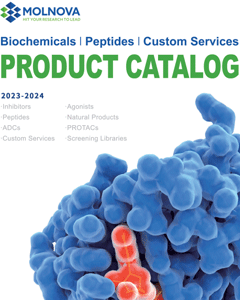
Aluminum phthalocyanine chloride
CAS No. 14154-42-8
Aluminum phthalocyanine chloride( Chloroaluminum Phthalocyanine | Phthalocyanine Chloroaluminum )
Catalog No. M27112 CAS No. 14154-42-8
Phthalocyanine Chloroaluminum is an intensely blue-green-colored aromatic macrocyclic compound that is widely used in dyeing.
Purity : >98% (HPLC)
 COA
COA
 Datasheet
Datasheet
 HNMR
HNMR
 HPLC
HPLC
 MSDS
MSDS
 Handing Instructions
Handing Instructions
| Size | Price / USD | Stock | Quantity |
| 10MG | 48 | In Stock |


|
| 25MG | 69 | In Stock |


|
| 50MG | 101 | In Stock |


|
| 100MG | 141 | In Stock |


|
| 200MG | 206 | In Stock |


|
| 500MG | 310 | In Stock |


|
| 1G | Get Quote | In Stock |


|
Biological Information
-
Product NameAluminum phthalocyanine chloride
-
NoteResearch use only, not for human use.
-
Brief DescriptionPhthalocyanine Chloroaluminum is an intensely blue-green-colored aromatic macrocyclic compound that is widely used in dyeing.
-
DescriptionPhthalocyanine Chloroaluminum is an intensely blue-green-colored aromatic macrocyclic compound that is widely used in dyeing. Phthalocyanine Chloroaluminum is a powerful photosensitizer and is useful in PDT.
-
In Vitro——
-
In Vivo——
-
SynonymsChloroaluminum Phthalocyanine | Phthalocyanine Chloroaluminum
-
PathwayOthers
-
TargetOther Targets
-
RecptorAntifungal| Myosin
-
Research Area——
-
Indication——
Chemical Information
-
CAS Number14154-42-8
-
Formula Weight579
-
Molecular FormulaC32H20AlClN8
-
Purity>98% (HPLC)
-
Solubility——
-
SMILESCl[Al]123N4C5=NC6=[N]1C(=Nc1n2c(N=C2c7ccccc7C(N=C4C4C=CC=CC54)=[N]32)c2ccccc12)C1C=CC=CC61
-
Chemical Name——
Shipping & Storage Information
-
Storage(-20℃)
-
ShippingWith Ice Pack
-
Stability≥ 2 years
Reference
1.Zheng Z, et al. Whole-genome sequencing reveals that mutations in myosin-5 confer resistance to the fungicide phenamacril in Fusarium graminearum. Sci Rep. 2015 Feb 4;5:8248.
molnova catalog



related products
-
2,3,8-Tri-O-methylel...
2,3,8-tri-O-Methyl ellagic acid has antimicrobial activity agaist Vibro cholera, Staphylococcus aureus, Klebsiella pneumoniae, Pseudomonas aeruginosa, Bacillus cereus, Escherichia coli.
-
Alopecurone A
Alopecurone A exhibits potent inhibitory activity on MRP1.
-
Methyl Linolenate
Methyl Linolenate is a polyunsaturated fattly acid (PUFA). It is used in studies on the mechanisms and prevention of oxidation/peroxidation of unsaturated fatty acids.



 Cart
Cart
 sales@molnova.com
sales@molnova.com


